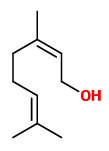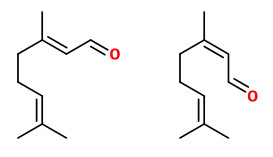Encyclia cordigera (Kunth) Dressler - syn. Cymbidium cordigerum Kunth, Encyclia atropurpurea var. leucantha Schltr., E. atropurpurea var. rosea (Bateman) Summerh., … - Orchidaceae
Rare (suffered from overcollecting) Central American (Mexico to Colombia and Venezuela) orchid, native to rather dry forests up to 900m; racemose inflorescences with 3-15 large (up to 8cm in diam.) flowers.
„Many consider the large showy flowers of Encyclia cordigera to be the finest in the genus. They have an intoxicating fragrance that varies slightly from plant to plant, but some say the pink-lipped flowers smell like roses.“ Encyclia cordigera - American Orchid Society
Major components of the floral scent of E. cordigera from Chiapas (Mexico) were nerol (49.7%), benzyl benzoate (5.7%), indole (5.5%), (E)-β-ocimene (4.4%), neryl acetate (3.7%), methyl hexadecanoate (3.8%), geranial (3.5%), neral (2.7%), benzylalcohol (2.3%), and linalool (2.2%).
[Cancino, Alejandro Del Mazo, and Anne Damon. „Comparison of floral fragrance components of species of Encyclia and Prosthechea (Orchidaceae) from Soconusco, southeast Mexico.“ Lankesteriana (2006)] PDF
The flower scent is a „refreshing citrus-related and rosy-floral note generated by the interplay of huge amounts of nerol, neral, and geranial with the nearly baroque aromatic-floral note, reminescent of orange flower and vanilla at the same time, which is mainly due to the interaction of methyl anthranilate, methyl N-methylanthranilate, 1H-indole, 2-phenylethanol, linalool, and vanillin. In addition, you may recognize a delicate honey note contributed by 2-phenylacetaldehyde and 2-phenylacetic acid, as well as a soft fruitiness due to decano-4-lactone; indeed a rather complex scent concept.“
[Scent of a vanishing flora, Roman Kaiser, 2011, 236-237 and 352-353]
The main constituents of the floral scent of E. cordigera (cultivated at a private nursery in Brazil) were β-ionol (45.4%), terpinen-4-ol (12.4%), benzyl benzoate (5.6%), indole (5.0%), (E)-β-ocimene (3.8%), and (E)-β-ionone (3.1%). Minor components were e.g. benzaldehyde (0.4%), phenylacetaldehyde (0.4%), methyl salicylate (0.6%), linalool (0.2%), cis rose oxide (1.9%), trans rose xoide (0.7%), (E)-β-damascenone (0.3%), and (E)-nerolidol (1.7%).
[Vasconcelos, Franciléia M. de, et al. „Volatile Constituents of Floral Scents from Encyclia cordigera (Kunth) Dressler and E. randii (Barb. Rodr.) Porto & Brade (Orchidaceae).“ Journal of the Brazilian Chemical Society 33 (2022): 96-101] PDF

Encyclia cordigera, Jardín Botánico Lankester, Costa Rica (2010) © Franz Xaver CC BY-SA 3.0 Wikimedia Commons





